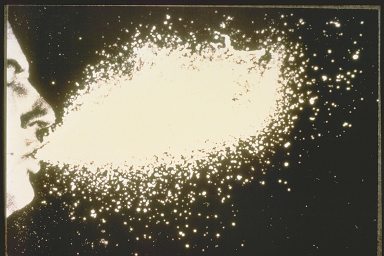 The
flu is often transmitted between humans by large respiratory droplets and small
aerosolized particles. Both are created during a sneeze or cough.
The
flu is often transmitted between humans by large respiratory droplets and small
aerosolized particles. Both are created during a sneeze or cough. Transmission
 The
flu is often transmitted between humans by large respiratory droplets and small
aerosolized particles. Both are created during a sneeze or cough.
The
flu is often transmitted between humans by large respiratory droplets and small
aerosolized particles. Both are created during a sneeze or cough.
An unprotected cough disperses heavy virus-laden droplets onto the next victim's conjunctiva and upper respiratory tract. Small aerosolized liquid particles remain suspended in the air longer. Aerosolized particles travel deeper to the lower respiratory tract. Low humidity enhances evaporation which can cause intermediate sized particles to rapidly shrink to about half original size, forming aerosolized droplet nuclei.
Experiments have demonstrated the infectious viability of aerosol suspended influenza virus to be up to 24 hours. Survival of aerosolized virus was decreased when relative humidity was greater than 40%.Increased viability of the virus in low relative humidity is suggested as a factor that accounts for the Flu's seasonal nature.
Theoretically, you can also get the flu simply by touching a virus-contaminated surface, like a telephone or door knob, and then transferring it with your hand to a mucus membrane, usually the mouth, nose or eye.
The incubation period for influenza is 1-4 days, with an average of 2 days. Adults typically are infectious from the day before symptoms begin through approximately 5 days after illness onset. Children can be infectious for more than 10 days prior to symptoms and young children can shed virus for up to 6 days before their illness onset. Severely immunocompromised persons can shed virus for weeks or months.
©RnCeus.com